
Manitoba is a province of Canada at the longitudinal centre of the country. It is Canada's fifth-most populous province, with a population of 1,342,153 as of 2021, of widely varied landscape, from arctic tundra and the Hudson Bay coastline in the north to dense boreal forest, large freshwater lakes, and prairie grassland in the central and southern regions.
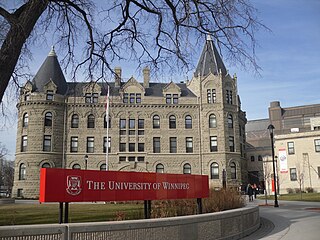
Winnipeg is the capital and largest city of the province of Manitoba in Canada. It is centred on the confluence of the Red and Assiniboine rivers, near the longitudinal centre of North America. As of 2021, Winnipeg had a city population of 749,607 and a metropolitan population of 834,678, making it the sixth-largest city, and eighth-largest metropolitan area in Canada.

Lake Winnipeg is a very large, relatively shallow 24,514-square-kilometre (9,465 sq mi) lake in North America, in the province of Manitoba, Canada. Its southern end is about 55 kilometres (34 mi) north of the city of Winnipeg. Lake Winnipeg is Canada's sixth-largest freshwater lake and the third-largest freshwater lake contained entirely within Canada, but it is relatively shallow excluding a narrow 36 m (118 ft) deep channel between the northern and southern basins. It is the eleventh-largest freshwater lake on Earth. The lake's east side has pristine boreal forests and rivers that were in 2018 inscribed as Pimachiowin Aki, a UNESCO World Heritage Site. The lake is 416 km (258 mi) from north to south, with remote sandy beaches, large limestone cliffs, and many bat caves in some areas. Manitoba Hydro uses the lake as one of the largest reservoirs in the world. There are many islands, most of them undeveloped.

Thomas Douglas, 5th Earl of Selkirk FRS FRSE was a Scottish peer. He was noteworthy as a Scottish philanthropist who sponsored immigrant settlements in Canada at the Red River Colony.

Canada has a large domestic and foreign tourism industry. The second largest country in the world, Canada's incredible geographical variety is a significant tourist attractor. Much of the country's tourism is centred in the following regions: Toronto, Montreal, Quebec City, Vancouver/Whistler, Niagara Falls, Vancouver Island, Canadian Rockies, British Columbia's Okanagan Valley, Churchill, Manitoba and the National Capital Region of Ottawa-Gatineau. The large cities are known for their culture, diversity, as well as the many national parks and historic sites.

St-Boniface is a city ward and neighbourhood in Winnipeg. Along with being the centre of the Franco-Manitoban community, it ranks as the largest francophone community in Western Canada.
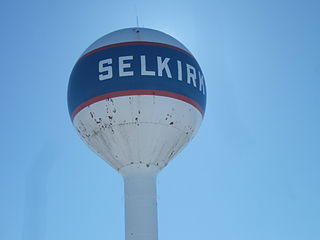
Selkirk is a city in the western Canadian province of Manitoba, located on the Red River about 22 kilometres (14 mi) northeast of the provincial capital Winnipeg. It has a population of 10,504 as of the 2021 census.

The Manitoba Junior Hockey League (MJHL) is a Junior 'A' ice hockey league operating in the Canadian province of Manitoba and one of nine member leagues of the Canadian Junior Hockey League (CJHL).

The Manitoba Museum, previously the Manitoba Museum of Man and Nature, is a human and natural history museum in Winnipeg, Manitoba, as well as the province's largest, not-for-profit centre for heritage and science education.
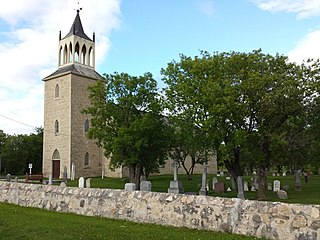
St. Andrews is a rural municipality in Manitoba, Canada. It lies west of the Red River; its southern border is approximately 8 kilometres (5.0 mi) north of Winnipeg.
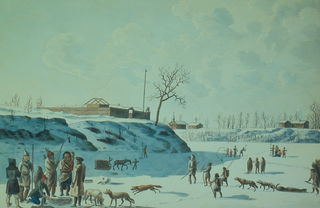
Fort Gibraltar was founded in 1809 by Alexander Macdonell of Greenfield of the North West Company in present-day Manitoba, Canada. It was located at the confluence of the Red and Assiniboine rivers in or near the area now known as The Forks in the city of Winnipeg. Fort Gibraltar was renamed Fort Garry after the merger of North West Company and the Hudson's Bay Company in 1821, and became Upper Fort Garry in 1835.

The SS Keenora is a steamboat on Lake Winnipeg. The vessel began operations on Lake of the Woods in Ontario, where from she was transported to Winnipeg, Manitoba and rebuilt. Currently retired from service, Keenora is the centrepiece of collection at the Marine Museum of Manitoba in Selkirk, Manitoba.

The Winnipeg Railway Museum is a railway museum located on tracks 1 and 2 within the Via Rail-operated Union Station in Winnipeg, Manitoba, Canada. Volunteers from the Midwestern Rail Association Inc., a non-profit organization founded in 1975, operate the museum.
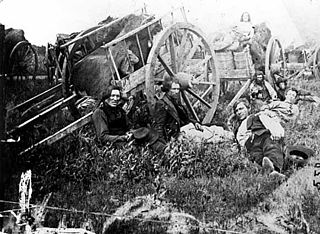
The Red River Trails were a network of ox cart routes connecting the Red River Colony and Fort Garry in British North America with the head of navigation on the Mississippi River in the United States. These trade routes ran from the location of present-day Winnipeg in the Canadian province of Manitoba across the Canada–United States border, and thence by a variety of routes through what is now the eastern part of North Dakota and western and central Minnesota to Mendota and Saint Paul, Minnesota on the Mississippi.

CGS Bradbury is a retired fisheries patrol vessel for the federal Department of Transport's Marine Services, constructed in 1915. The vessel was sold to commercial interests in 1935. The ship was removed from service in 1973 and became a museum ship on static display at the Marine Museum of Manitoba.

The history of Winnipeg comprises its initial population of Aboriginal peoples through its settlement by Europeans to the present day. The first forts were built on the future site of Winnipeg in the 1700s, followed by the Selkirk Settlement in 1812. Winnipeg was incorporated as a city in 1873 and experienced dramatic growth in the late 19th and early 20th centuries. Following the end of World War I, the city's importance as a commercial centre in Western Canada began to wane. Winnipeg and its suburbs experienced significant population growth after 1945, and the current City of Winnipeg was created by the unicity amalgamation in 1972.
This is a timeline of the history of Winnipeg.

Archives of Manitoba, formerly the Provincial Archives of Manitoba until 2003, is the official government archive of the Canadian province of Manitoba. It is located at 200 Vaughan Street in Winnipeg, where it has been established since January 1971.

The MS Lord Selkirk II was a passenger cruise ship that sailed the Red River and Lake Winnipeg in Manitoba, Canada. Lake Winnipeg's last cruise ship, she was the largest ever built between the Great Lakes and the Rockies, with accommodation for 130 passengers and 40 crew. She was 176 feet long with a 41 foot beam.

Settlers, Rails & Trails Inc. is a community-run, non-profit museum located in Argyle, Manitoba. It exhibits local history, railway and agricultural artifacts and historical information, and it is also home to the Canadian Flag Collection. Argyle is governed by the Rural Municipality of Rockwood, and is located approximately 28 km northwest of Winnipeg, within the Manitoba Capital Region.






























